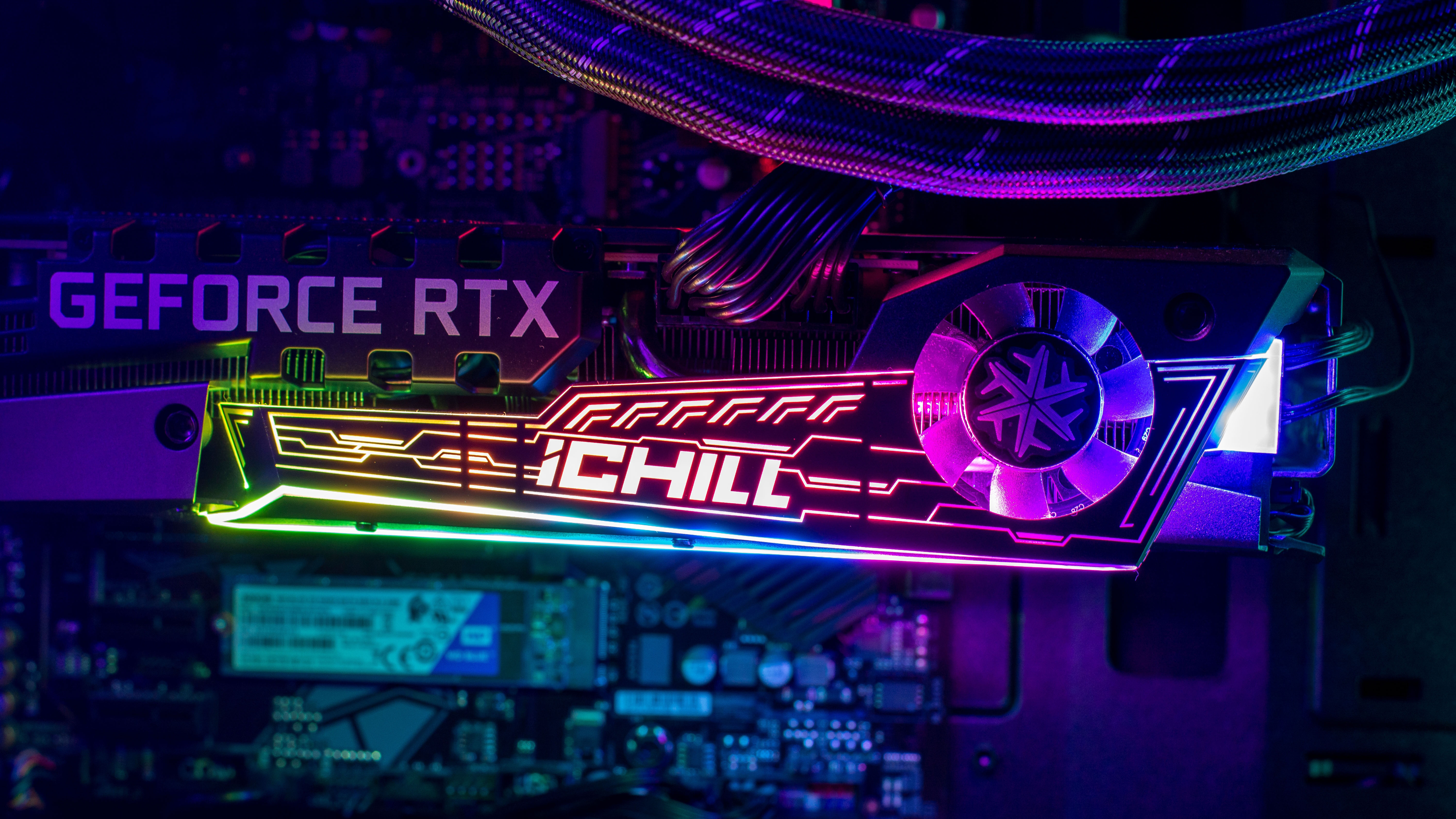
There I was, sifting through RTX 4080 Super reviews, wondering what the world has come to when a supposedly better-value refresh of a GPU still costs $1,000. Then, a simple thought struck me: graphics card performance baselines today are much better than they used to be.
I started thinking about my first-ever graphics card, the 2008 Nvidia GeForce 9600 GT, and how I prayed it would hit 60fps at 1080p on high settings. And today? Today, I believe a new GPU should net me at least 100fps at 1440p on max settings. Entitled or what?
Well, maybe not entitled. Perhaps we can make so much better technology today for such low manufacturing costs that we do, in fact, all deserve a slice of the profits granted by Moore’s Law. Regardless, these thoughts sent me down a research rabbit hole, and I was a little surprised by what I found.
Call me a glutton for clickbait headlines, but this one’s true: GPU prices aren’t more expensive than they used to be. Don’t believe me? I’ve got the data to prove it.
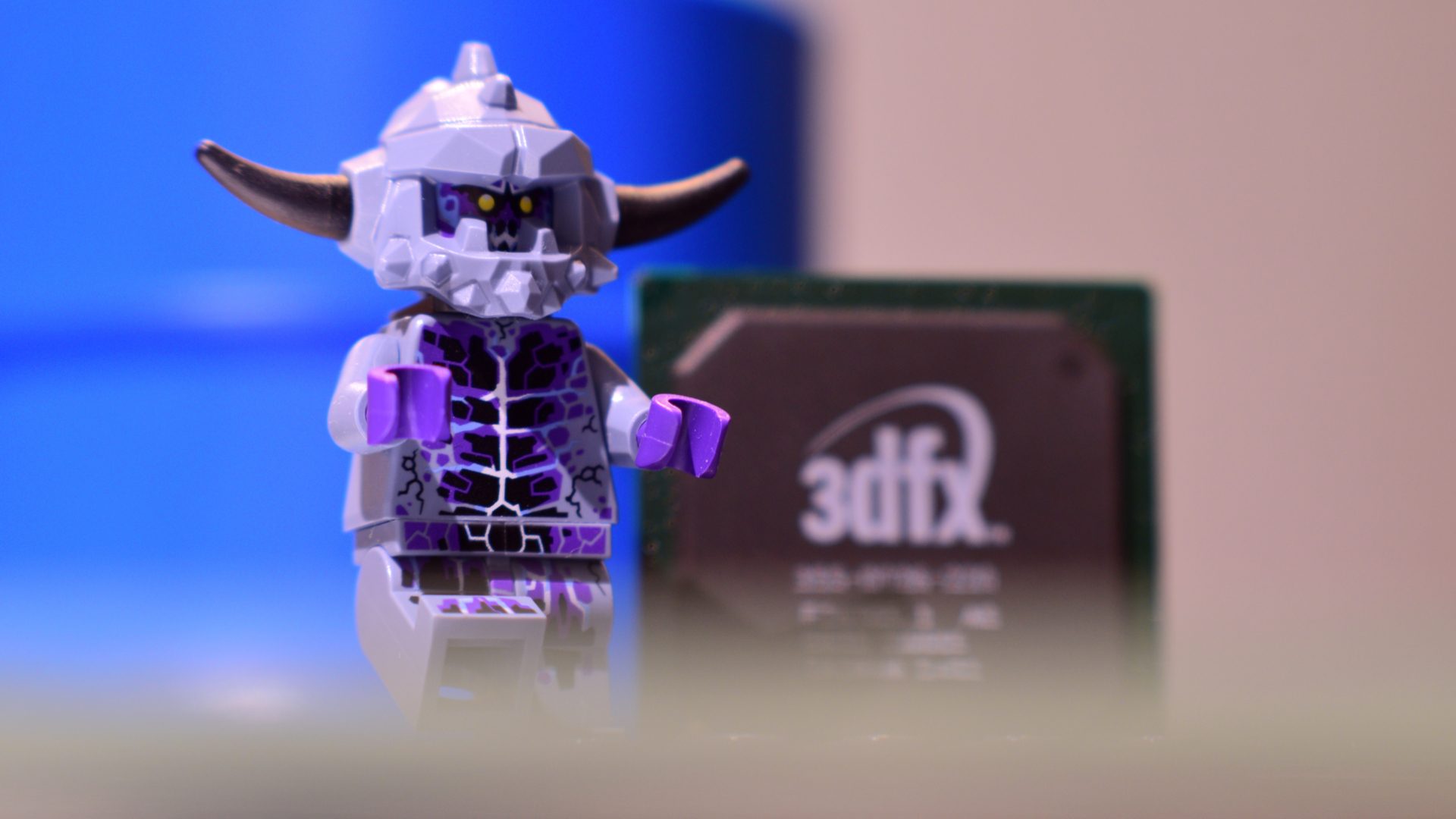
GPUs from the 1990s to today
The pre-40-series GPUs I chose to compare were all popular high-end cards of their time. Here’s a quick run-down:
- The Voodoo2 made 800x600 gaming possible and was often run in SLI.
- The 9700 Pro with R300 GPU marked the beginning of affordable 2000-era gaming.
- The 8800 GTX oversaw the Xbox 360 (and Crysis) era of high-fidelity 1080p gaming.
- The R9 290 and GTX 980 oversaw the Xbox One era of even higher fidelity gaming.
And the rest is history… or, well, more recent history.
I focused mostly on Nvidia cards because those have received the brunt of the complaints about GPUs being too expensive. Similarly, I decided to leave the recent 40-series Super cards out of the equation because the non-Super cards bore the brunt of these complaints.
| Header Cell - Column 0 | Release date | Price upon release | Price (inflation-adjusted) | Clock speed | Memory |
|---|---|---|---|---|---|
| 3dfx Voodoo2 | 1998 | $299 | $566 | 90MHz | 12MB EDO |
| ATI 9700 Pro | 2002 | $399 | $684 | 325MHz | 128MB DDR |
| Nvidia GeForce 8800 GTX | 2006 | $599 | $916.38 | 576MHz core / 1350MHz shader | 768MB GDDR3 |
| AMD Radeon R9 290 | 2013 | $399 | $528.25 | 947MHz | 4GB GDDR5 |
| Nvidia GeForce GTX 980 | 2014 | $549 | $715.23 | 1216MHz | 4GB GDDR5 |
| Nvidia GeForce GTX 1080 | 2016 | $599 | $769.73 | 1733MHz | 8GB GDDR5X |
| Nvidia GeForce RTX 3080 | 2020 | $699 | $832.98 | 1710MHz | 10GB GDDR6X |
| Nvidia GeForce RTX 4080 | 2022 | $1,199 | $1,263.58 | 2505MHz | 16GB GDDR6X |
| Nvidia GeForce RTX 4070 Ti | 2023 | $799 | $808.74 | 2610MHz | 12GB GDDR6X |
Graphics cards are cheaper than they used to be
The first thing to look at – and this is where many people start and end their analysis – is GPU price. We can consider the prices of all these GPUs at the time of release, then the prices factoring in inflation.
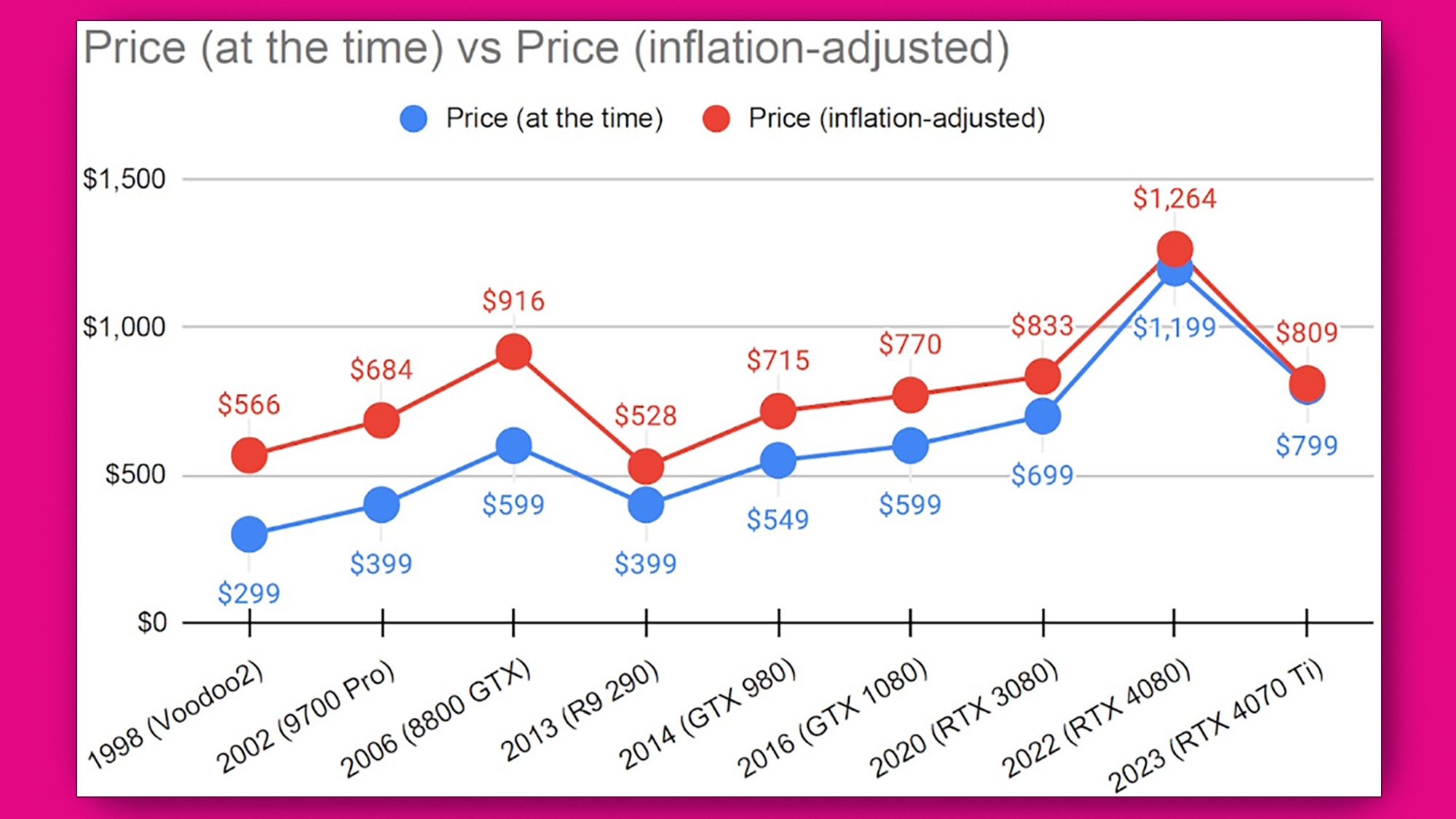
At first glance, this doesn’t look too good for today’s GPUs. But just compare, for a moment, 2006’s 8800 GTX and 2023’s RTX 4070 Ti. Factoring in inflation, we can see that the 4070 Ti actually launched for less than the 8800 GTX did – so much for the “expensive” 40-series!
Moving on to performance, we see a clear improvement over time.
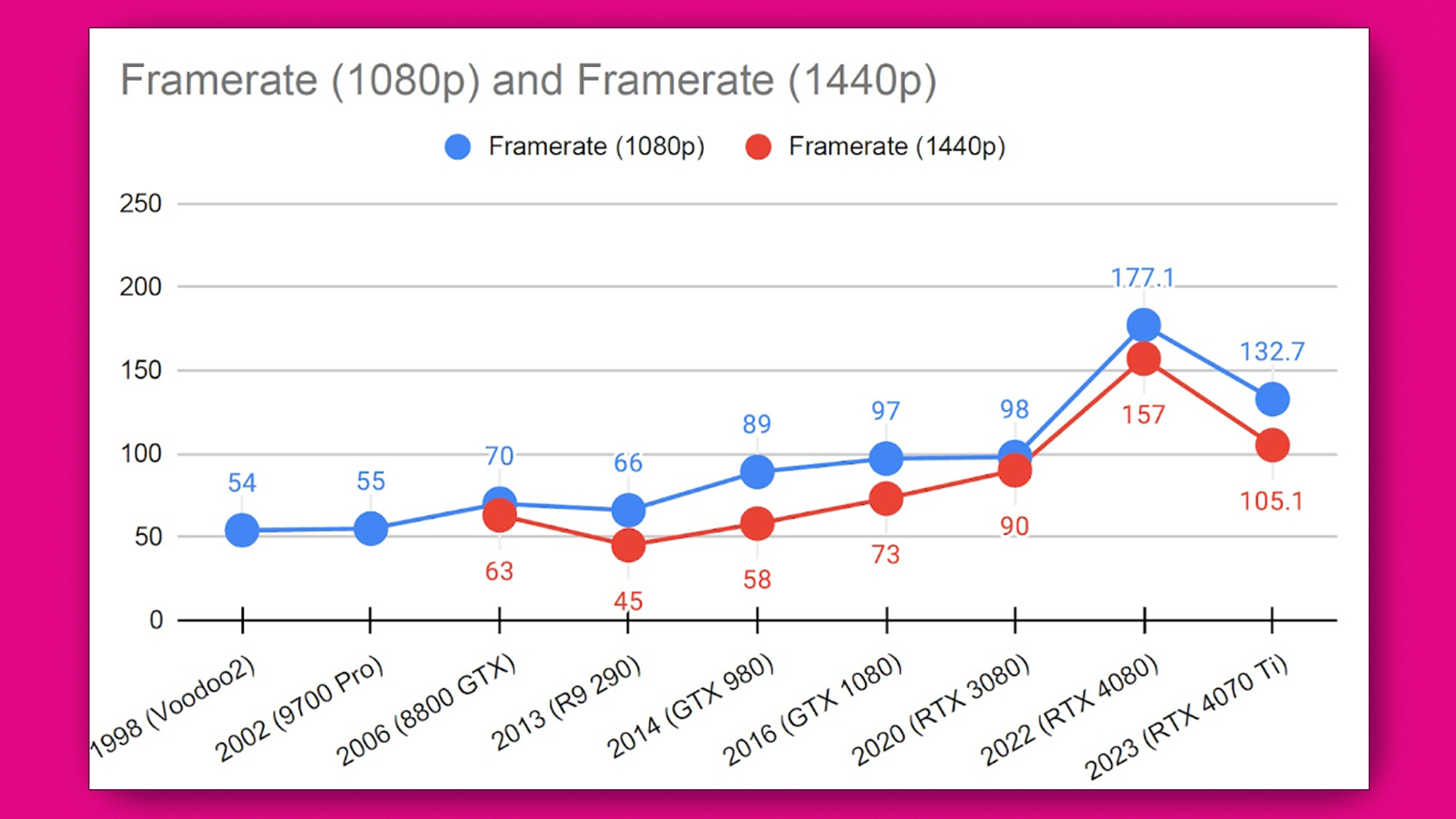
The framerates listed are for games that were good-looking but not Crysis-level demanding when each GPU launched.
We’re actually getting a better deal than we have at pretty much any point over the past 25 years.
For instance, I used Battlefield 4 benchmark data for the GTX 980 (here) and Red Dead Redemption 2 benchmark data for the RTX 4080 (here). This way, we get a more accurate picture of how these GPUs performed in their own day.
Where we really see the proof in the pudding, though, is when we look at the cost per frame for these GPUs when we adjust for inflation. If we ask, “How much did we spend on each frame for each of these GPUs, if we translate it into today’s prices?” we see just how cushy we have it today.
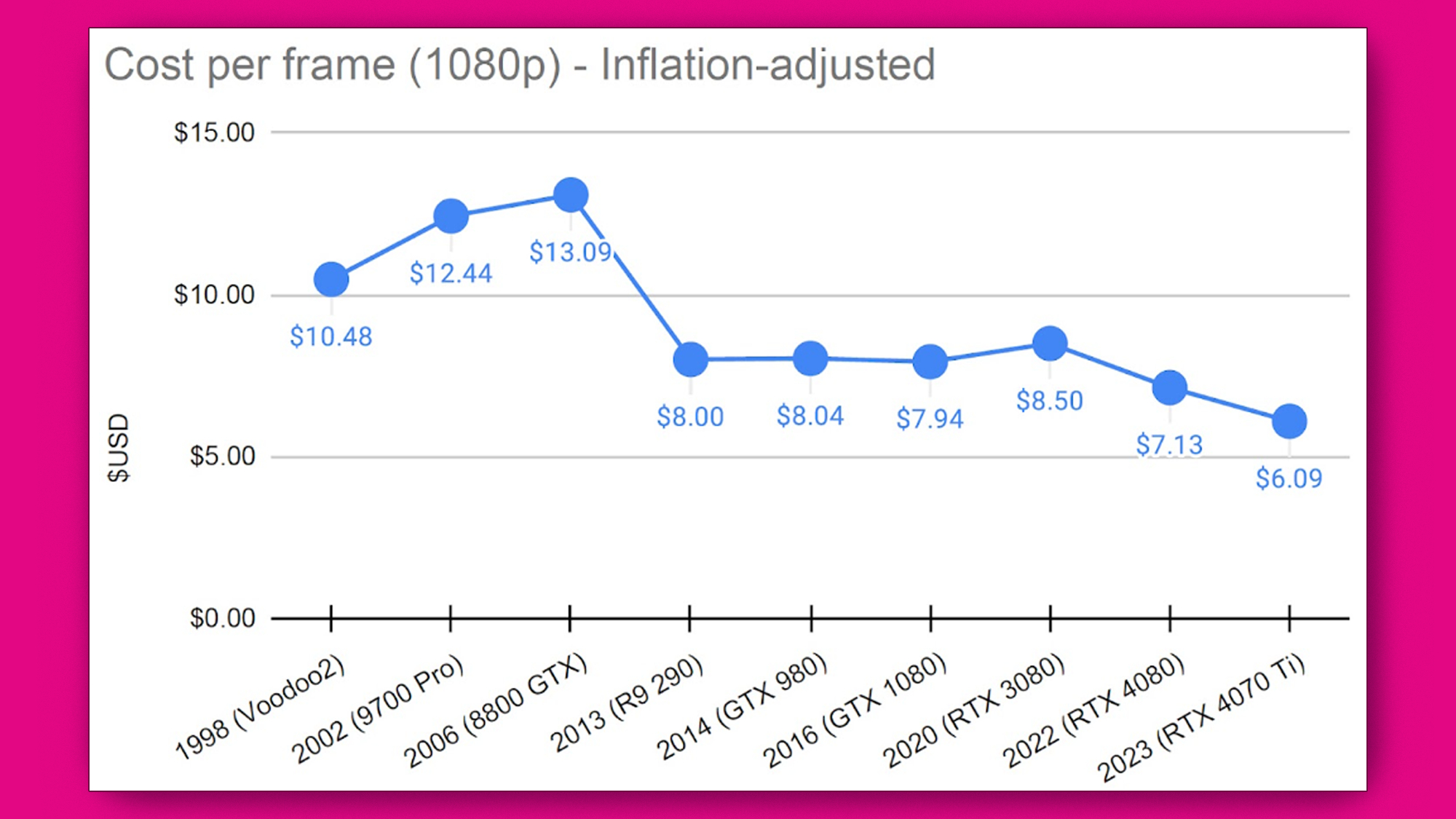
Far from GPUs being expensive today, if we consider the actual performance we’re getting for our dollar, we see that we’re actually getting a better deal than we have at pretty much any point over the past 25 years.
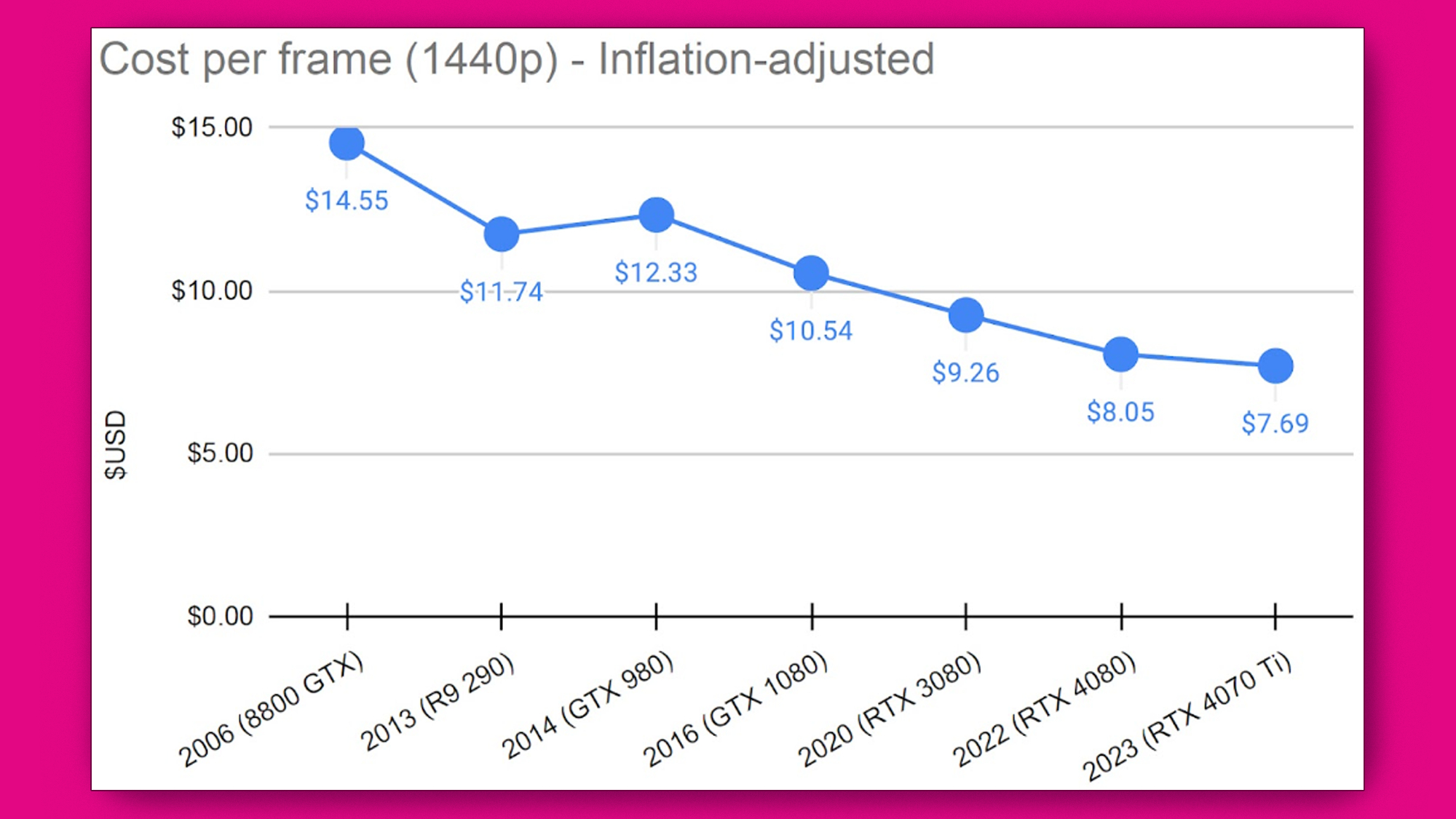
And just to hit the point home, we see an even clearer picture for 1440p.
Far from GPUs being more expensive, then, they seem to be pretty damn inexpensive compared to those of yesteryear. That is, provided we don’t conveniently ignore all the massive gains in performance we’ve gotten with successive GPU generations.
These performance gains cannot be understated, and they shouldn’t be ignored when considering today’s GPU prices. Gone are the days when the holy grail was 60fps at 1080p. Now, the holy grail is something like 100+fps at 1440p. And that isn’t even factoring in DLSS.
We should expect to pay a little more for all that… But, as it turns out we don’t even pay that much for it.
Again, just compare the 8800 GTX to the 4070 Ti. For less money (factoring in inflation) than the 8800 GTX, we get almost twice the performance in demanding games today as what the 8800 GTX got in the comparatively demanding games of its own day.

Why all the fuss?
Despite all the above, there’s definitely something disheartening about high-end GPU prices sitting towards (or even north of) $1,000. But that’s only because we consider today’s high-end GPUs equivalent to yesteryear’s, and we shouldn’t.
It makes far more sense to compare today’s mid-range cards to 2000-era and 2010-era high-end cards. It’s not as if we can’t get cheaper cards today that give us the relative performance we used to have or better.
None of this even factors in the graphical improvements we’re used to today. Compare Far Cry 6 to the original Far Cry, and we can see how far we’ve come regarding graphical fidelity.
And all this for a cheaper cost than ever before. This is why the Moore’s Law arguments don’t work: we’re not comparing apples to apples here. Not just performance but graphical fidelity, too, has improved exponentially.
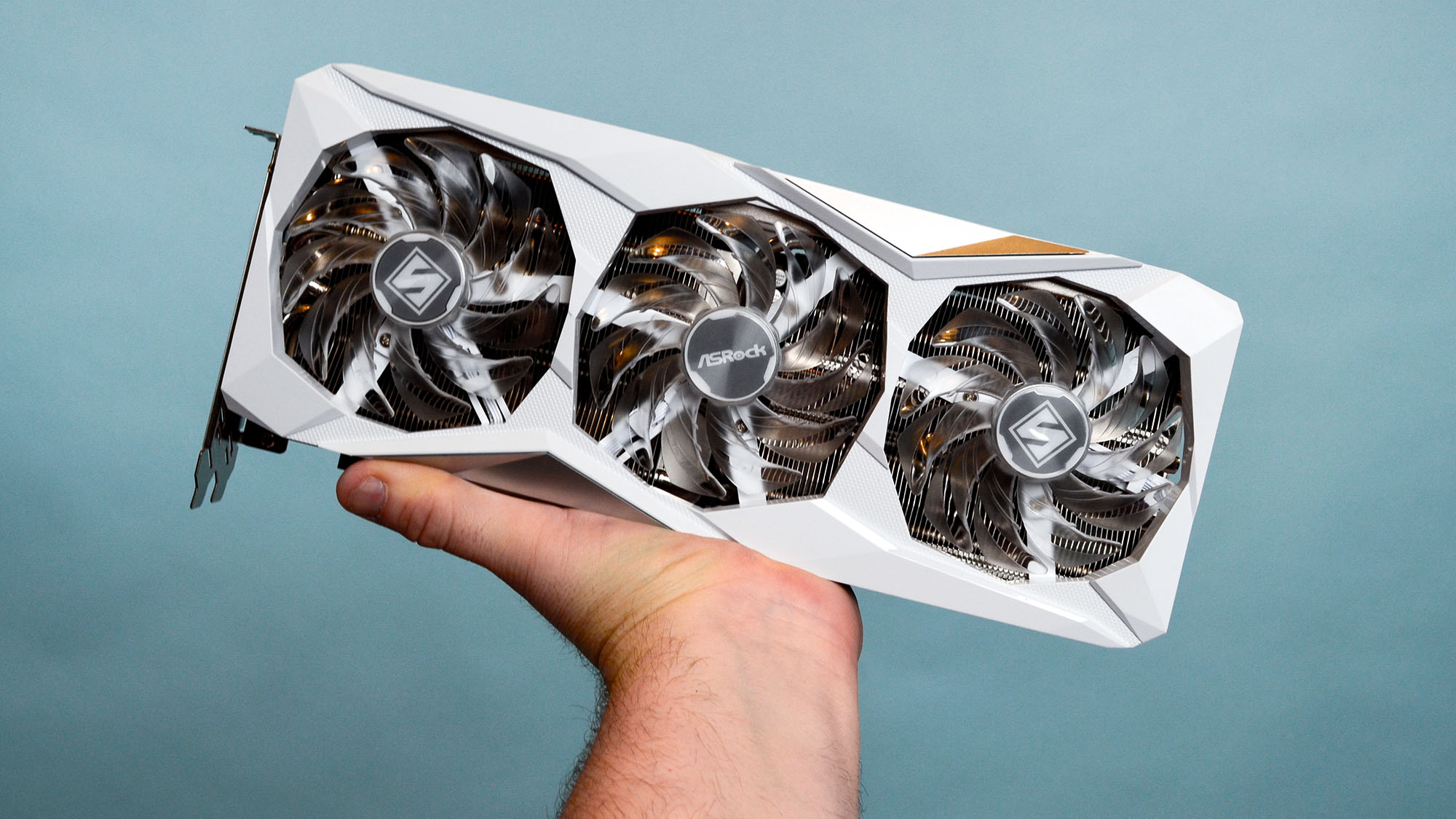
I’m grateful for today’s GPU prices
I started this by discussing my first graphics card, the 9600 GT. That GPU launched for $179 in 2008, which, in today’s money, is $256.41. You can buy an RTX 3060 for about that, which nets about 60fps in many demanding titles today (even at 1440p, in slightly less demanding games). The 9600 GT, on the other hand, I remember struggling to hit 60fps at 1080p on standard titles such as Call of Duty 4.
Throw in another $60, and you can get yourself an RTX 3060 Ti – my current GPU. Today, I play games that look 10x better than those I used to play on my 9600 GT, and I net much higher framerates than I ever did back then.
And if we want more than that? Well, the options are there, with the best 1440p graphics cards like the RTX 4070 Super or RX 7900 GRE. We now see these cards cost less than the very best graphics cards of the past.
And if even those aren’t enough for us, the best 4K graphics cards offer a new class of high-end cards far beyond anything we could dream of just a decade ago. And thankfully, we don’t have to pay much more than we did back then to use one of them.
Get daily insight, inspiration and deals in your inbox
Sign up for breaking news, reviews, opinion, top tech deals, and more.

Jacob is a hardware writer who has written for authoritative tech and PC gaming sites such as PCGamer, PCGamesN, Pocket-lint, and, of course, TechRadar. He’s also a published academic researcher and Ph.D. student in philosophy, so if he’s not tinkering with his latest component upgrade, you’ll probably find him staring into space, fruitlessly pondering the meaning of existence. You can contact him via his LinkedIn or his contact page.